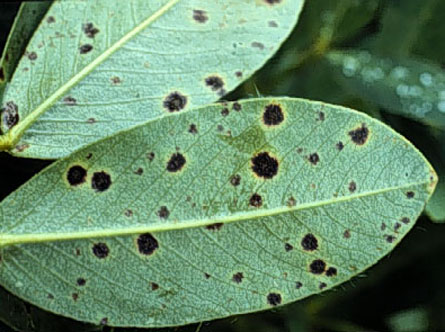How better weather models can save peanut farmers money
Earth sciences reporter Sid Perkins reports from the American Meteorological Society meeting in Atlanta.
ATLANTA — In the near future, weather models could save North Carolina’s peanut farmers a total of more than $1 million dollars each year by letting them know when spraying fungicide on their crops isn’t necessary.

In 2008, the peanut crop in North Carolina was worth about $90 million. But a fungal disease known as peanut leaf spot can take as much as half of a farmer’s yield, says John McGuire, an environmental meteorologist at the State Climate Office of North Carolina in Raleigh. The risk of that disease developing is high when humidity exceeds 95 percent and the temperature remains between 60° and 90° Fahrenheit for more than 48 hours in any 96-hour period, he notes.
Now, farmers who have signed up with the State Climate Office receive e-mails when data collected at the research weather station nearest their home indicate that the crop is at risk. But sometimes farmers don’t wait for such warnings: During some hot, humid spells, they preemptively spray fungicide on their crops — a treatment for which the chemical alone can cost between $7 and $20 per acre.
McGuire and his colleagues want to supplement those after-the-fact notifications of leaf spot risk with advance warnings of the need to spray fungicide, the researchers reported January 18 during the annual meeting of the American Meteorological Society. The researchers recently looked at the results of four different models used to predict weather in the upcoming 72 hours — and compared them with actual data gathered at nine research stations scattered throughout North Carolina’s peanut-growing region — to see how well they could predict when conditions favorable for the development of the leaf spot fungus occur.
All of the models, including one used by the National Weather Service to provide near-term forecasts for the mid-Atlantic region and three used by the climate office to provide weather forecasts for the state, underestimated the number of hours when the fungus could develop. Two of those models, however, only underestimated the interval during a four-day period by 1 hour or so, says McGuire.
If one or more of the models can be fine-tuned to accurately forecast the risk of leaf spot, farmers will be able to save time and money by avoiding unnecessary fungal treatments. If all of the state’s peanut farmers avoid just one treatment each year, they’ll save a total of about $1.1 million dollars, the researchers estimate.






